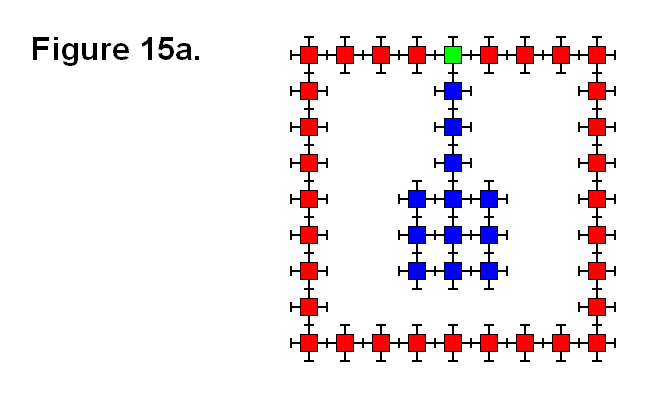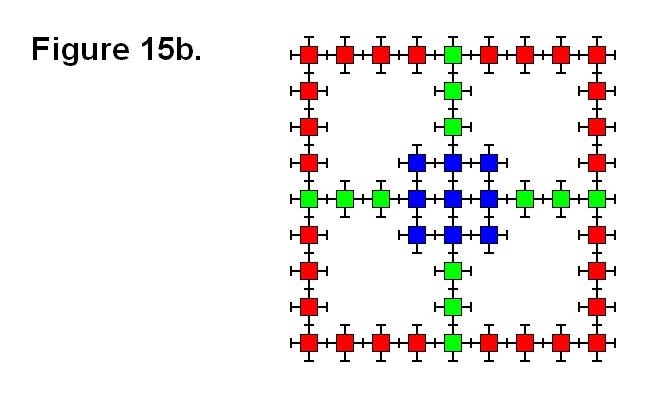MAKING ACCELEROMETERS USING MODULES IN A MATRIX
Although the modules can be produced so that each one has its own accelerometer, it is perhaps better that this option not be utilized, especially for matrices that would consist of large numbers of modules, for the following reasons:
- It is more expensive to mount an accelerometer element in each module.
- Generally it is unnecessary for a matrix to consist of modules that each contain an accelerometer.
- A matrix can build accelerometers that are located throughout the structure positioned where desired.
In Figure 15a, the matrix is a simple example of a structure with a pendulum, the blue modules, for an accelerometer. The red modules symbolize a simplified cross section of an implemented structure. When the structure is subjected to horizontal acceleration, the pendulum, which is connected to the rest of the structure by the green module, will pivot the leg of the green module to which it is connected and in neutral (i.e., it is not locked from moving). The green module’s leg, which is connected to the pendulum, uses the sensors for measuring the angle of the leg’s position to measure acceleration of the structure in the horizontal plane.
Figure 15b shows how a matrix can build a gravimeter. As the structure, which is shown simplified as the red shaded modules and in 2 of 3 dimensions, is subjected to forces, the block of blue modules affect the green modules that connect it to the rest of the structure. In a similar way that the leg of the green module is driven by the pendulum in Figure 15a to act as a sensor, the green modules in Figure 15b also use the pivoting and telescoping position sensors in their legs that are chained together to measure forces placed on the structure. An actual gravimeter would consist of having a 3rd row of green modules perpendicular to the plane of the image and connected to a 3-dimensional block of the blue shaded modules. The forces that it measures can be both translational as well as rotational. Since the effects of external forces are conservative, it is necessary for the green modules to implement feedback systems that poll for the actual presence of forces by measuring the resisting effect of actuating the leg. For example, when the external forces are removed, the green modules have to re-center the block of blue modules for “synthesizing” the effect of equilibrium.
In practice, a matrix implemented into a structure can randomly use almost any module “on-the-fly” as an accelerometer. This basically means that any matrix implemented into a structure practically has the inherent built-in feature of having accelerometers, even though there are no elements present in the modules designed to function as accelerometers.
